St Patrick's Day: Parades and celebrations take place across NI
- Published
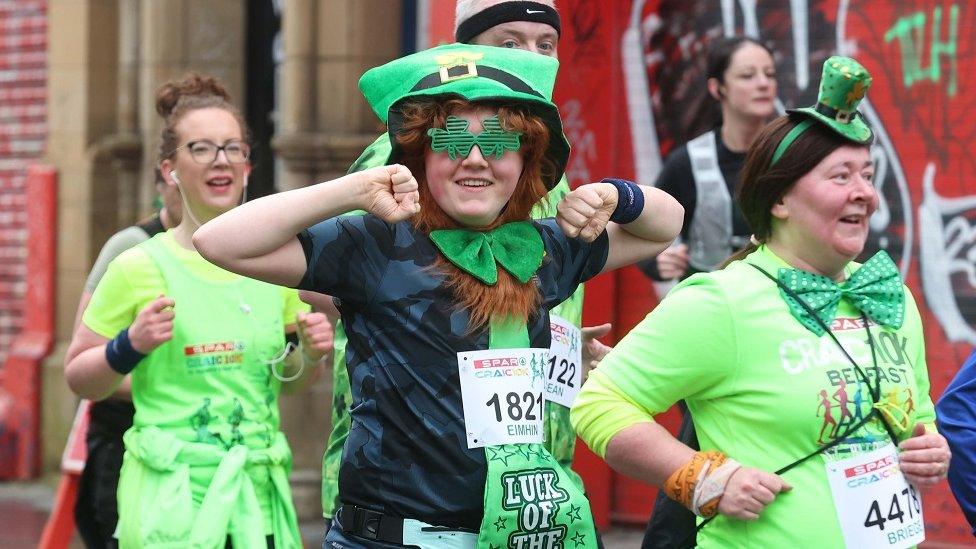
Things kicked off in Belfast with a 10k run
Thousands of people gathered in towns and cities across Northern Ireland on Sunday to celebrate St Patrick.
Parades took place in both Belfast and Londonderry on Sunday afternoon.
In Downpatrick, a pilgrimage walk was led by religious leaders from Saul Church to Down Cathedral, the saint's burial place.
Meanwhile, 1,500 people made a St Patrick's day pilgrimage to Slemish mountain in County Antrim.
The mountain is believed to have been St Patrick's first home in Ireland.
The Downpatrick walk was followed by a cross-community service and wreath laying at St Patrick's grave, and the annual parade, which started at 13:30.
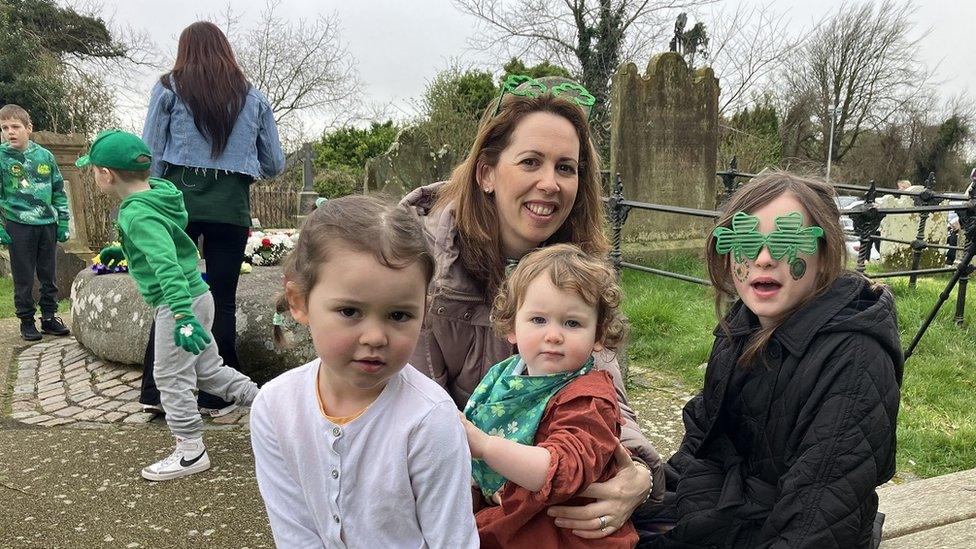
The Breen family at St Patrick's grave in the grounds of Down Cathedral, Downpatrick, on Sunday
A steady stream of people made their way to Down Cathedral. Among them were the Breen family - mum Irene and daughters Bella, Darcy and Kate - from Saintfield.
Irene said they had come "to see the grave and enjoy the celebrations and the parade in the town centre".
Thousands of people took part in the parade in Belfast.
Among those attending were a group of women from New Jersey in America whose husbands were marching in the parade.
"It's brilliant, absolutely brilliant, it's magic," one of the women told BBC News NI.
"They [their husbands] tried to get into Dublin and Dublin wouldn't have them so we're here in Belfast."
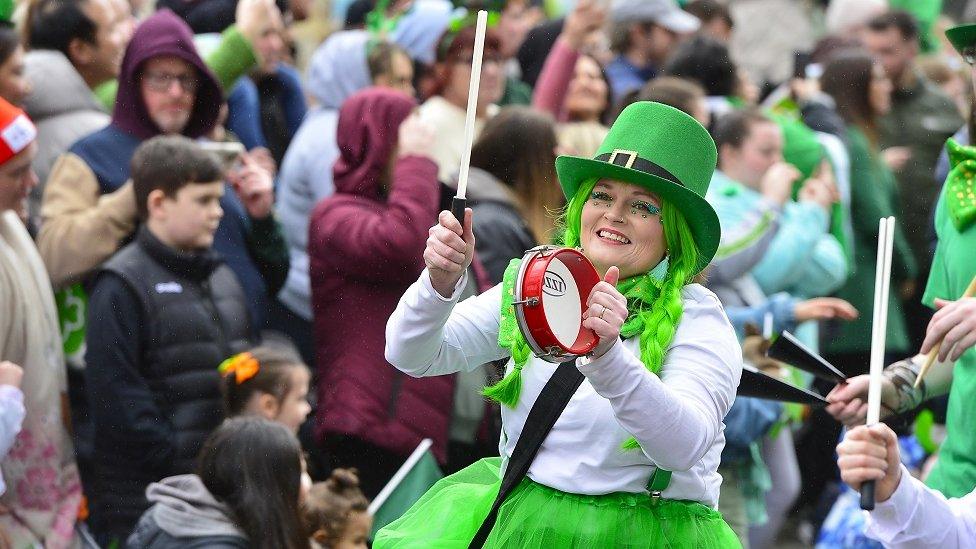
Thousands of people watched the Belfast parade
Following disturbances in previous years, the PSNI said it had been working with the city council, universities and schools to "highlight that residential areas of south Belfast are not a party or nightlife destination".
"If you're going out in Belfast for St Patrick's Day put your safety first. If you are socialising, drink responsibly, stay with your friends and get home safely," said Supt Gavin Kirkpatrick.
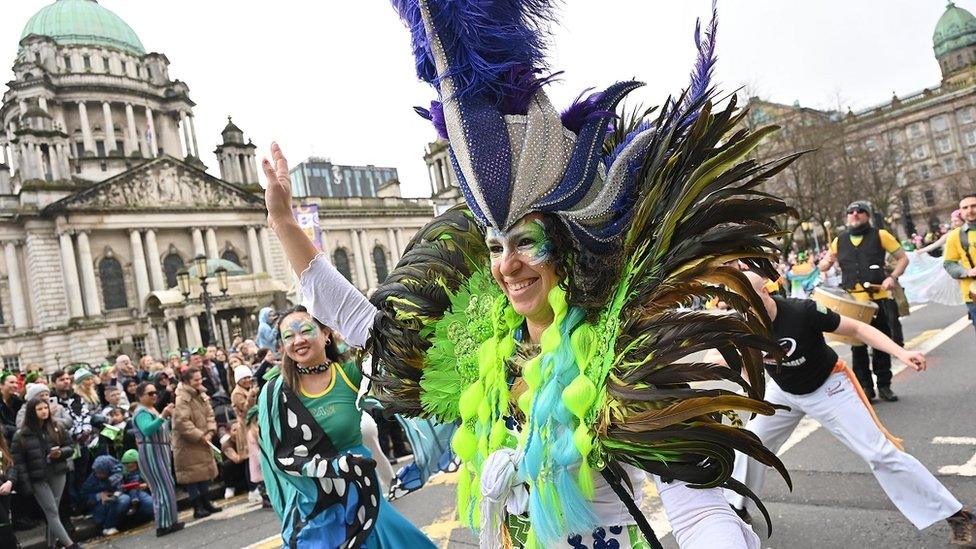
It was a colourful spectacle in the Northern Ireland's capital city
In Cushendall, more than 200 people attended the village's first St Patrick's festival.
The County Antrim village had a "hooley at the corner" in tribute to Ireland's patron saint, with traditional music and dancing.
Police warned of traffic disruption in many areas due to the festivities and said they had been working with organisers to "ensure it is a day of enjoyment for everyone".
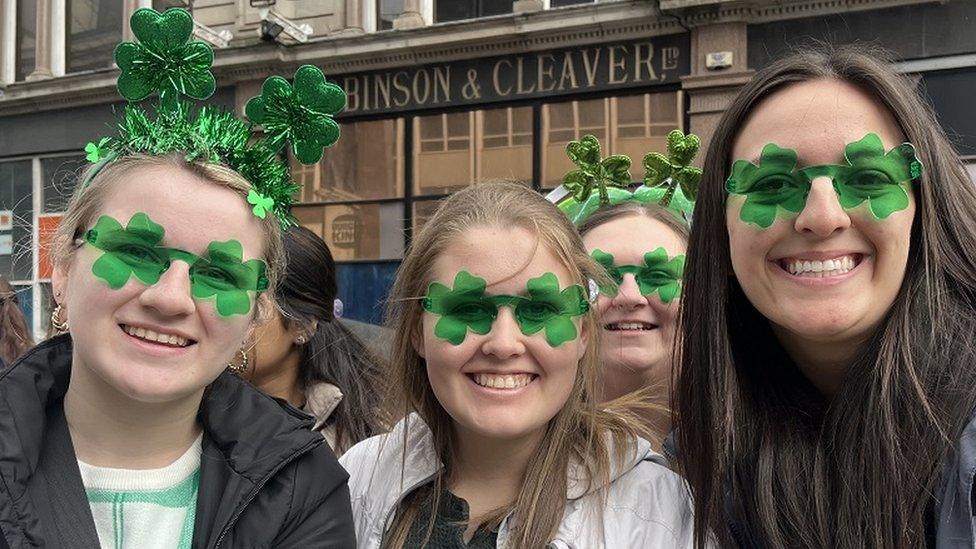
Sydney Staggs, Caitlyn Beane and Candice Caskey were in Belfast on Sunday celebrating St Patrick's Day
Seventy people attended a Mass held at the top of Slemish mountain.
Paul Gallagher is the events manager for Mid and East Antrim borough council.
"This is Slemish's big day," he said.
"We've had people from Dublin, London, Canada and of course lots of locals. So it's been a special day."
Niall Kennedy, from Carnlough, has climbed Slemish before, but not on St Patrick's day.
"The footing is treacherous today. People were struggling, so it was slow going," he told BBC News NI.
Down to Dublin
In the Republic of Ireland, County Down comedian and Late Late Show presenter Patrick Kielty was this year's grand master of one of the world's biggest St Patrick's Day parades.
Dublin was expecting about 500,000 spectators at the event, which began at midday.

Presenter and County Down man Patrick Kielty gets into the spirit of things in Dublin
More than 4,000 people took part, including marching bands, performers, dancers and floats.
The theme for this year was Spréach, the Irish word for spark.
'The best of Irishness'
In his St Patrick's Day message, Irish President Michael D Higgins paid tribute to all Irish people directly engaged in "peacekeeping and humanitarian relief around the world".
He said the "practical work that this country has done in creating peace is a good example of the best of Irishness, which is more important now than ever" and called for an immediate ceasefire in Gaza and the release of all hostages.
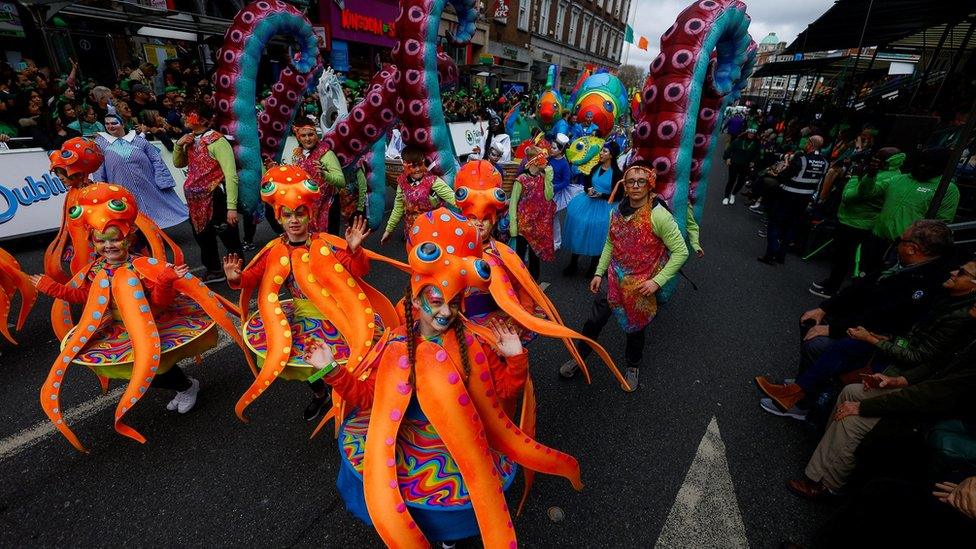
Participants in the St Patrick's Day parade in Dublin
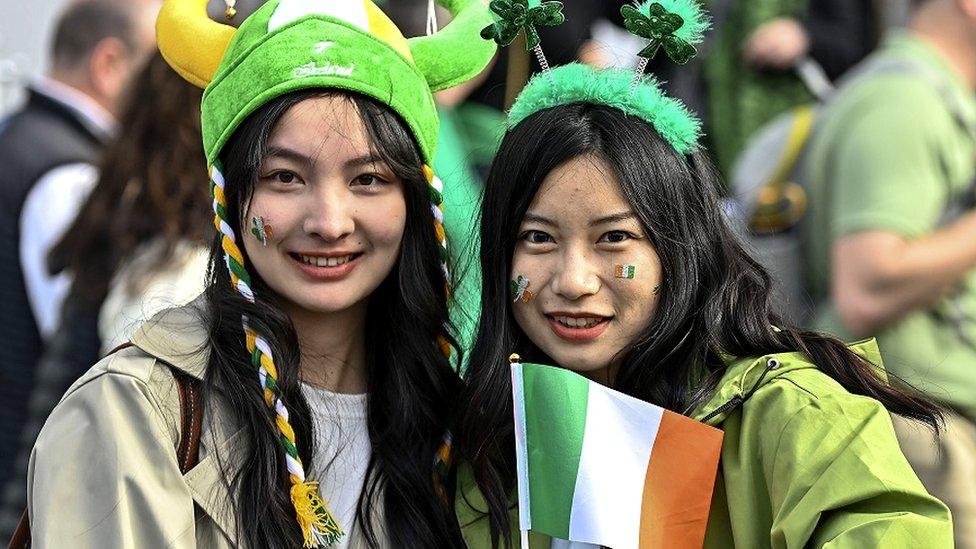
Xueer Chen and Cara Lee from China at the St Patrick's parade in Dublin
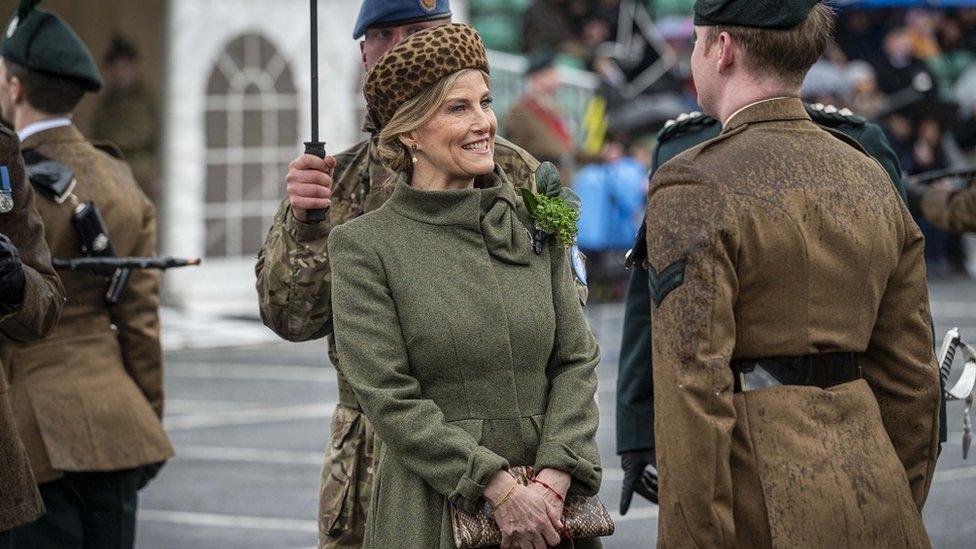
The Duchess of Edinburgh presented shamrocks to Sergeant George Horner, a D-Day veteran, and serving Army personnel in Lisburn on Saturday
On Saturday, Sophie, the Duchess of Edinburgh, visited the 2nd Battalion, The Royal Irish Regiment in Lisburn to watch a St Patrick's Day parade and presentation of shamrock.
Meanwhile, Princess Anne attended the Ireland v Scotland rugby match in Dublin, with the UK Ambassador to Ireland, Paul Johnston.
Also on Saturday people gathered on Belfast's Shankill Road for an early St Patrick's Day parade.
It was part of a three-day event - the Greater Shankill St Patrick's Day Festival - which is now in its second year.
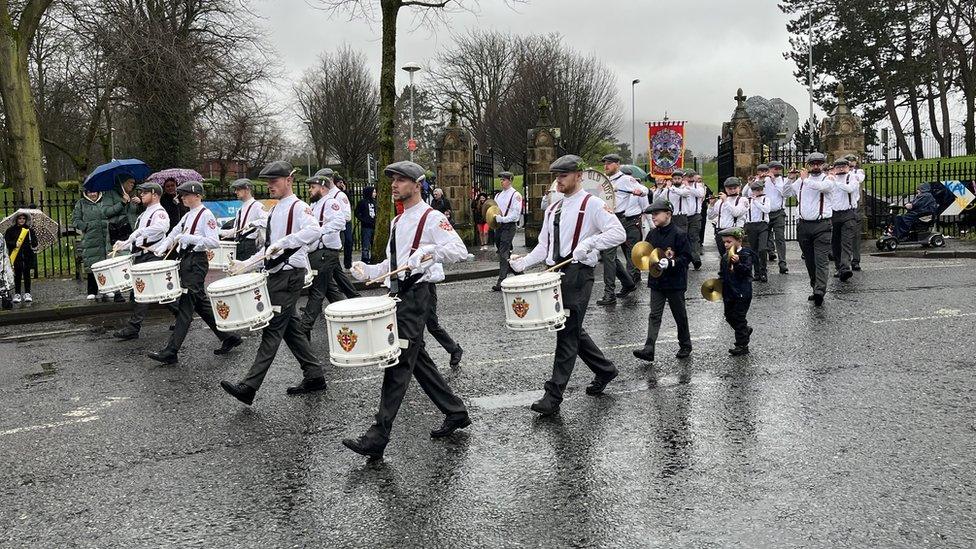
On Saturday people gathered on Belfast's Shankill Road for an early St Patrick's Day parade
It has been described as an effort by the unionist community to reclaim this part of its cultural heritage.
The parade featured a number of loyalist bands.

Who was St Patrick?
Saint Patrick, the patron saint of Ireland, is thought to have grown up in Britain in the 5th century AD, during Roman times and to have first come to Ireland as a kidnapped slave.
Once he was free, he became a priest and returned to the country as a missionary.
St Patrick is honoured by the largest Christian denominations in Ireland.
It is believed he used shamrock to explain the idea of the Holy Trinity to pagans, which is why the clover has become synonymous with St Patrick's Day celebrations.
Some other legends, such as the belief that St Patrick banished snakes from Ireland, have been proven false.
St Patrick's Day was originally celebrated as a religious feast to mark his work, but now the day highlights Irish history and culture. It is only marked as a national holiday in the Republic of Ireland and Northern Ireland, but many people around the world get involved in celebrations, even if they have no connection to the country.
Landmarks around the world, such as the Sydney Opera House and the Empire State Building, are lit up green - and the Chicago River is traditionally dyed green to mark the day.
An abundance of parades, street parties and céilis (traditional Irish social gatherings involving dancing and music) can also be expected, no matter the weather.
Related topics
- Published16 March 2024
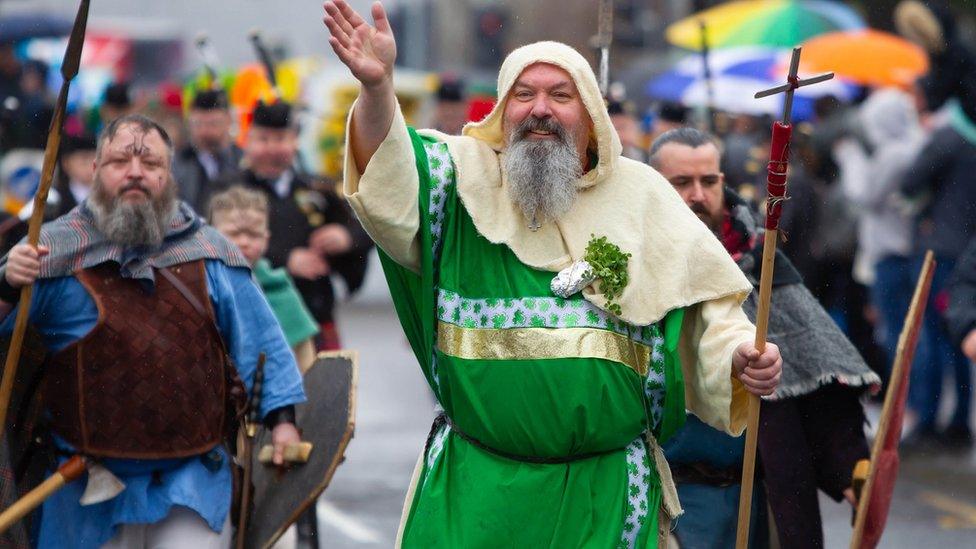
- Published16 March 2019

- Published17 March 2023

- Published17 March 2023
